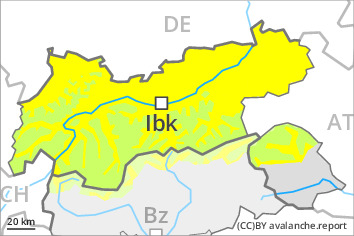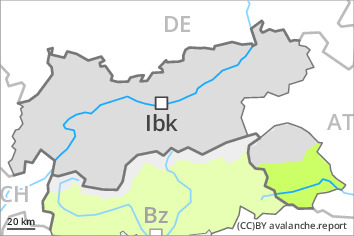
Danger level
 | 2600m |
|  |
|  |

Gliding avalanches are the main danger.
A moderate (level 2) danger of gliding avalanches exists, in particular on steep east, south and west facing slopes below approximately 2600 m. Gliding avalanches can be released at any time of day or night. Caution is to be exercised in areas with glide cracks.
Older wind slabs can be released in isolated cases, but mostly only by large additional loads, on extremely steep shady slopes in high Alpine regions. These places are very rare and are clearly recognisable to the trained eye.
In steep terrain there is a danger of falling on the hard snow surface.
Snowpack
dp.2: gliding snow
The snowpack will be stable over a wide area. The snowpack will be subject to considerable local variations at high altitudes and in high Alpine regions. As a consequence of rising temperatures and rain a crust formed on the surface. This applies in all aspects below approximately 2600 m, as well as on steep sunny slopes. Sunshine and high temperatures will give rise to slight softening of the snowpack on steep sunny slopes.
Low and intermediate altitudes: The snowpack is wet all the way through and its surface has a crust that is strong in many cases.
Tendency
The avalanche conditions remain generally favourable. Gliding snow represents the main danger.


